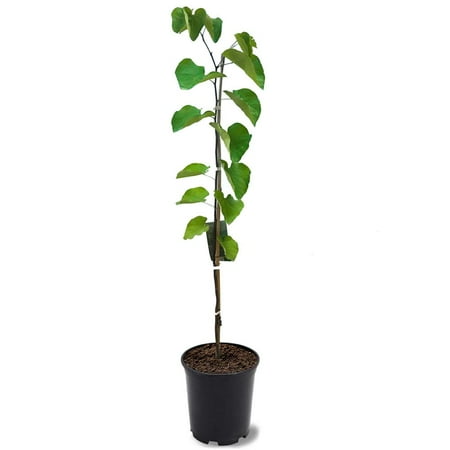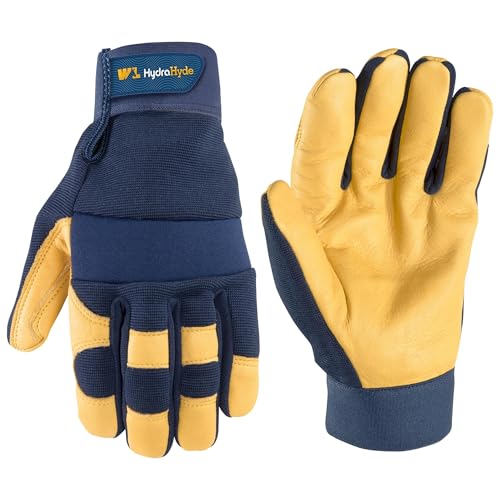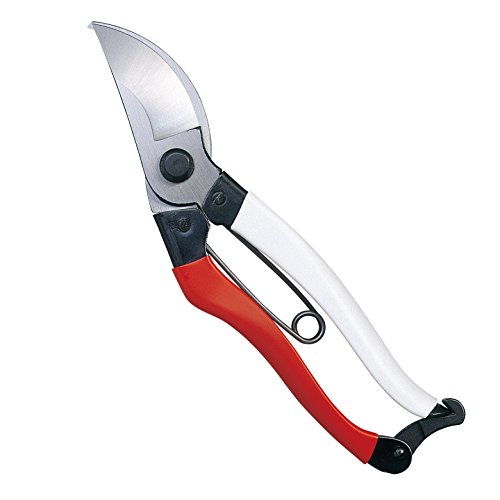Evergreen trees never to grow – 5 troublesome species to avoid and what to plant instead
Many evergreen trees can cause harm to your yard by growing too large and draining the soil of moisture

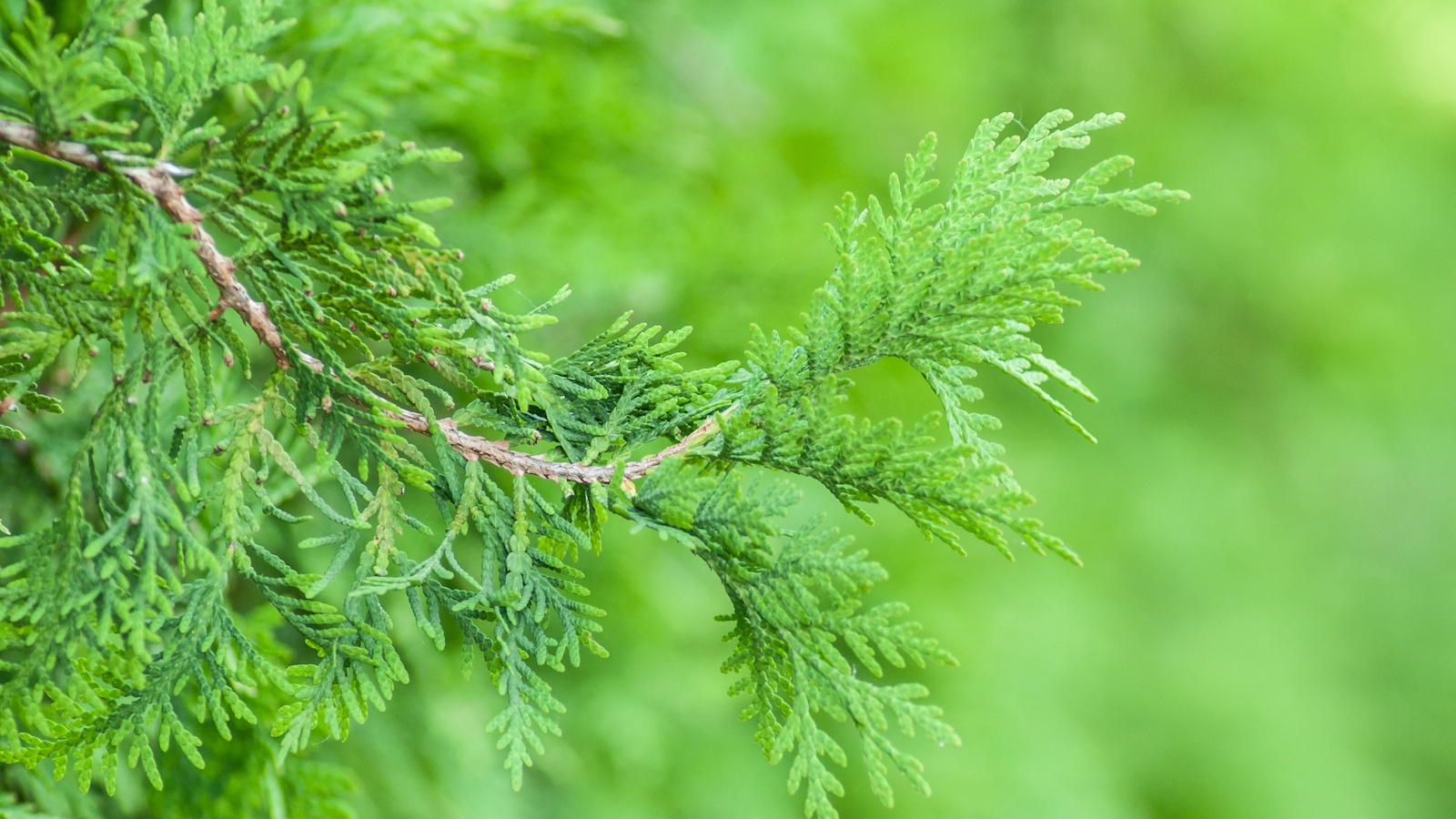
While we might like the idea of an evergreen yard that remains vibrant and full of life all year long, many evergreen trees are best kept out of our gardens. Whether for their aggressive nature or tendency to outcompete other trees, certain species can do more harm than good.
As a gardening professional, I have experienced many instances where vast and towering evergreens have become a source of frustration for homeowners. While their lush, dense foliage is to be admired, the wrong evergreen in the wrong place can prove to be a challenge requiring regular maintenance. For example, a mighty conifer is better suited to a vast landscape, not to a small yard where it will dominate all other plants.
Here, I reveal five evergreen trees never to grow in your yard, with suggestions of what species to consider instead. So, whether you are wondering what evergreens are best suited to an urban plot, or you want to find out what trees never to plant in a small backyard, our guide will help you to make the right decision for your borders.

Evergreen trees never to grow
There are many different evergreen trees found growing across the world. Perhaps the most infamous evergreen plant family would be conifers, with examples including pines, redwoods, spruces, cedars and fir trees.
Whatever evergreen tree you opt to grow, it is always recommended to select a species that is suited to your US hardiness zone and to fit your yard. Here are five evergreen trees never to grow, with recommendations on what to plant instead.
1. Leyland Cypress
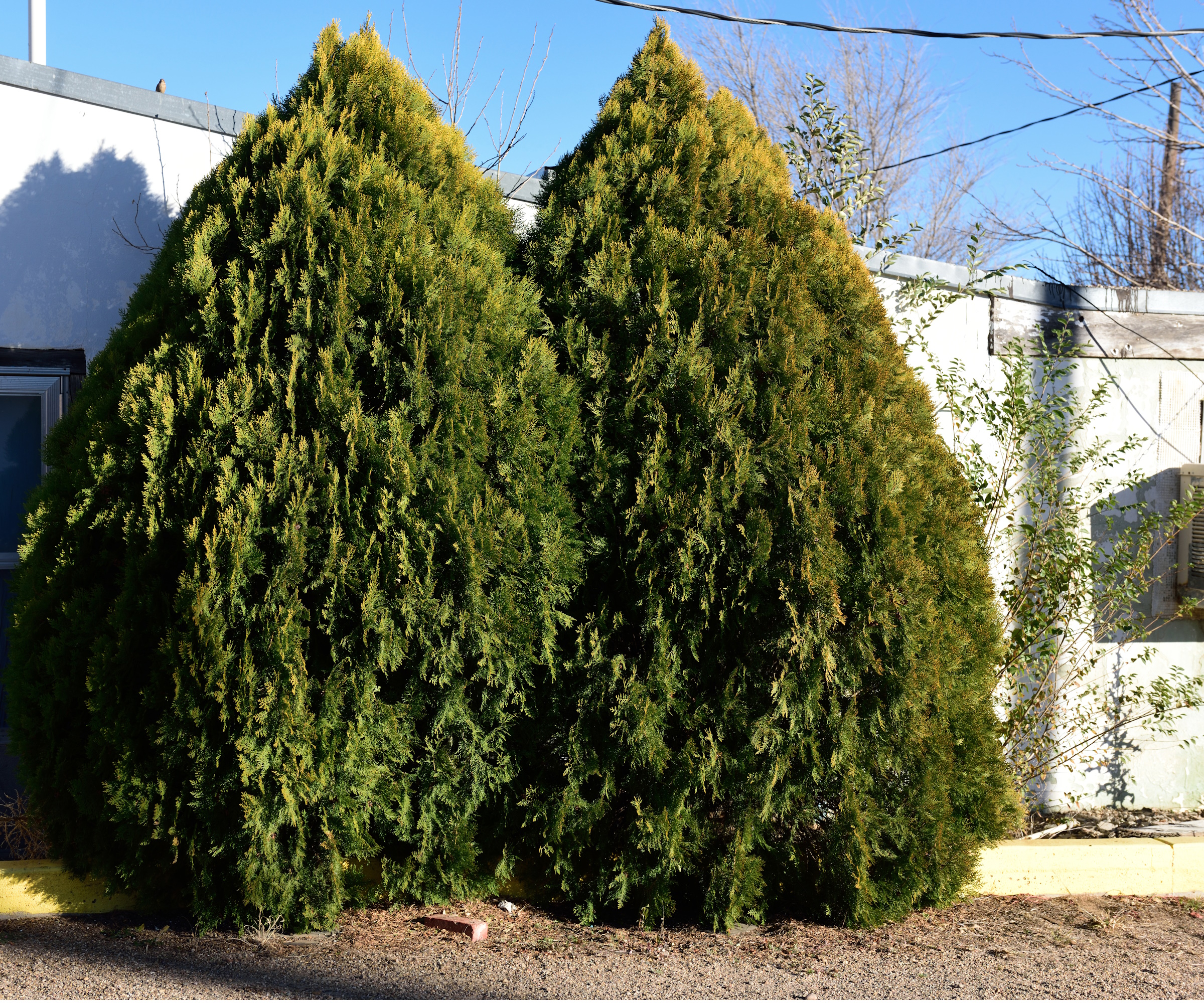
'In small backyards, the biggest problem with many evergreen trees can be their mature sizes,' says Bert Bast, garden expert and owner of Bast Brothers Garden Center.
'Most evergreens will get large in a hurry,' Bert continues, 'including the Leyland cypress, or Cupressus × leylandii. While this species is famed for its rapid growth rate and is often used as a front yard hedge for privacy, this speed comes with significant downsides. I would recommend staying away from most pines and spruces in gardens unless you opt for a narrow or dwarf variety.'
Design expertise in your inbox – from inspiring decorating ideas and beautiful celebrity homes to practical gardening advice and shopping round-ups.
Indeed, as Bert references, Leyland cypress trees can reach up to 50 feet tall, and without regular pruning, they will quickly create dense shade that will prove challenging for other nearby plants.
'If you are in a warm enough climate, residing in US hardiness zones 7 to 10, you can grow the Italian cypress tree, Cupressus sempervirens,' Bert says. 'While tall, this species remains narrow, and could be grown in small backyards.'
Blue Italian cypress trees are available from Nature Hills.
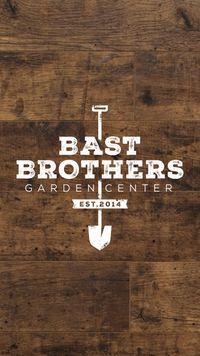
Bert Bast is a garden expert and owner of Bast Brothers Garden Centre. Established in 2014 and nestled in the heart of Mullica Hill, NJ, Bast Brothers Garden Center is a destination for all things garden.
2. Chinese privet

Chinese privet, or Ligustrum sinense, is another evergreen tree to avoid growing. It is considered an invasive tree in many southeastern US states, including Tennesee, noted for its ability to spread rapidly. Once established, it is very difficult to remove from garden beds and borders.
'If you’re looking for a green privacy screen, consider slower-growing evergreens like American holly, or Ilex opaca,' Bert says. 'Learning how to grow holly is relatively straightforward, and the native option is ideal for a more manageable and durable evergreen alternative.' American holly trees are available from Amazon.
American holly can be grown down to US hardiness zone 5 and typically exhibits a very slow growth rate, often extending no more than one foot per year. Pruning once every three years in spring will help to keep this native evergreen under control.
3. Eastern white pine

Pinus strobus, commonly called the eastern white pine, is a large tree native to eastern North America, found growing across much of Minnesota and Illinois. While beautiful, this evergreen tree is best suited to vast landscapes and kept out of backyards. After all, an 80-foot conifer might not be the optimal evergreen for smaller spaces.
What's more, the eastern white pine tends to have a shallow root system, meaning that it will make life very difficult for other trees, shrubs and perennials as the soil will quickly lose moisture.
Consider growing one of the other best pine trees that are more suited to smaller plots, such as the dwarf Alberta spruce, Picea glauca ‘Conica'. This species is remarkably hardy and can be grown down to US hardiness zone 3, reaching no more than 10 feet tall.
Alberta spruce live plants are available from Amazon.
4. Manchineel

Manchineel, or Hippomane mancinella, is an evergreen tree that is found growing in Florida, Mexico and across Central and South America.
Despite showing a remarkable ability to bind soil and prevent coastal soil erosion, manchineel is often considered one of the most poisonous plants in the world. For this reason, it is best admired in its native range and kept out of backyards.
For a non-toxic evergreen tree, try growing Arbutus unedo, or the strawberry tree. The strawberry tree is native to the Mediterranean and can be grown from US hardiness zone 7 plus. This tree will reach no taller than 30 feet and is valued for its red fruits that are produced in late summer.
Strawberry trees are available to order from Amazon.
5. Giant Arborvitae
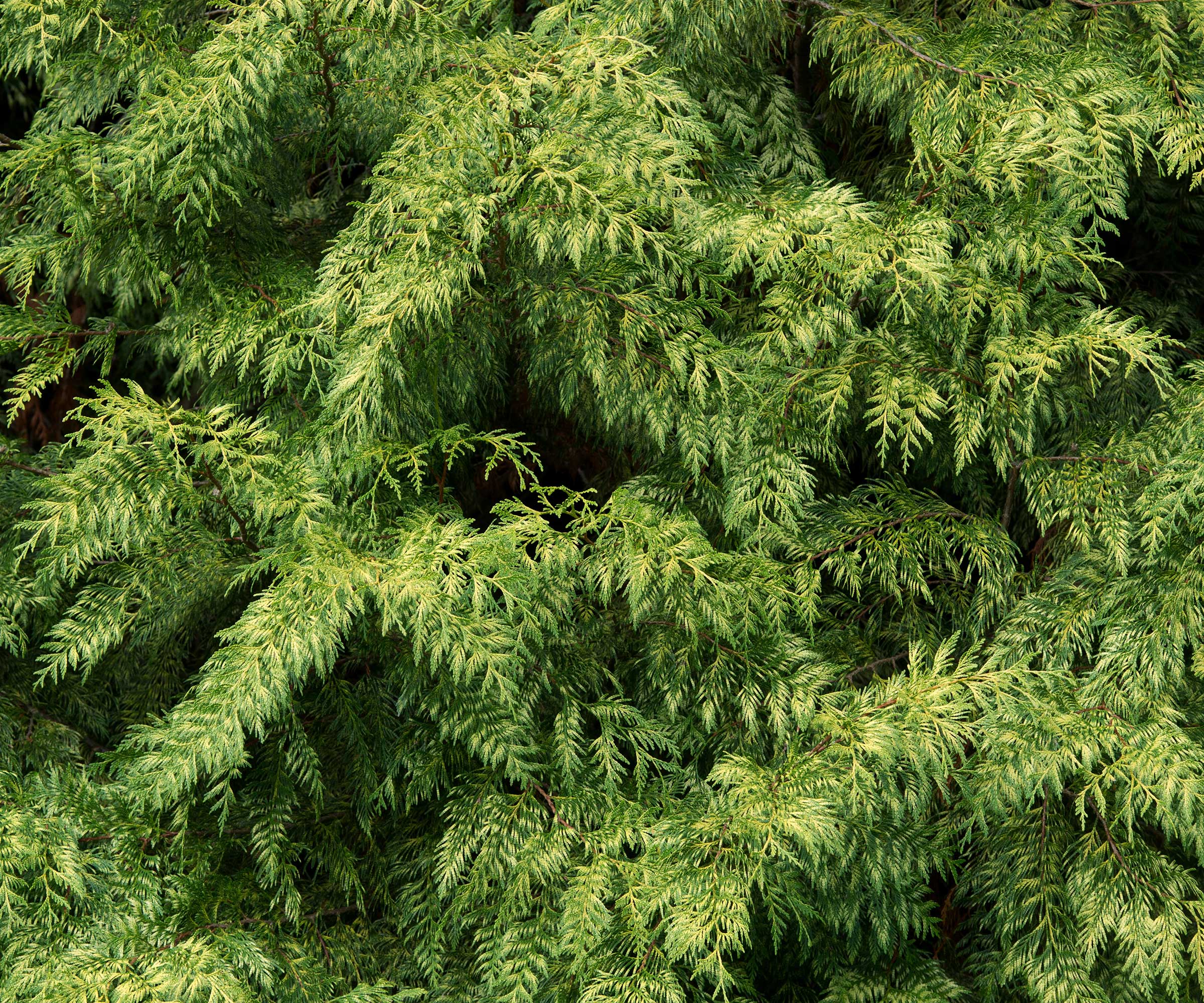
Giant arborvitae or western red cedars, Thuja plicata, are the largest species in the genus Thuja, growing up to 230 feet tall. When seen in the wild, this mighty evergreen can take on a pyramidal shape, with an attractive dark red bark.
For obvious reasons, the giant arborvitae is best avoided when landscaping backyards. Instead, opt to grow a smaller, dwarf variety, such as the golden oriental thuja, Thuja orientalis 'Aurea Nana'.
'For an unusual evergreen option, you could also try growing the ‘Little Gem’ magnolia,' Bert recommends. 'This is one of the best trees for small yards, with a mature height of 24 feet. It is hardy from zone 7 to zone 9 and mature trees have a beautiful late spring flower to complement the lush evergreen leaves.'
'Little Gem' magnolia live starter plants are available from Amazon.
FAQs
Can I cut down a large evergreen conifer tree in my yard?
It is always best to consult with your local government office before cutting down any large, established trees. Various cities and states will have different rules about tree cutting, even on private property, and it is crucial to find out whether or not you need a permit before taking action.
Whatever evergreen trees you decide to grow, remember to keep an eye on your plants during winter. As evergreens retain their foliage during the colder months of the year, they may need supplemental watering during dry periods. Applying a thick layer of mulch can help to retain moisture, and will also insulate the soil and roots in winter.
For more tree inspiration, see our guide on the best trees for water absorption, to help reduce waterlogging and flooding in your yard this year.

Thomas is a Content Editor within the Gardens Team at Homes and Gardens. He has worked as a professional gardener for both public spaces and private estates, specializing in productive gardening, growing food and flowers. Trained in Horticulture at the Garden Museum, he has written on gardening and garden history for various publications, including The English Garden, Gardens Illustrated, Hortus, The London Gardener and Bloom. He has co-authored a Lonely Planet travel book, The Tree Atlas, due out in 2024.
